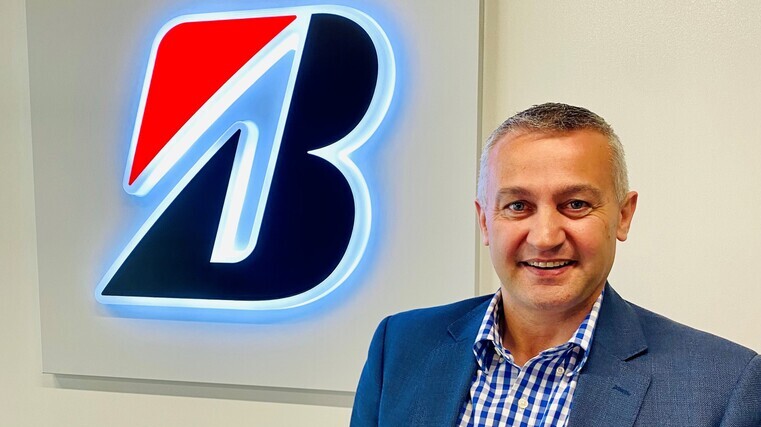Bridgestone backs alliance

Bridgestone has praised the formation of the Trans-Tasman Recycling Alliance (TTRA) – a joint venture between New Zealand’s mandatory Tyrewise scheme and Tyre Stewardship Australia, which is voluntary.
Under the newly launched TTRA, the two national schemes will remain independent, but co-fund the regional development of end-of-life tyre (ELT) solutions.
There will be an emphasis on market development for high-value tyre-derived products, policy advocacy, technology, innovation and capability development.
Bridgestone Australia & New Zealand has played an active role for more than a decade in progressing the tyre stewardship model across the Tasman and helping to create Tyrewise through its collaboration with its facilitator, the Hastings-based 3R Group.
Heath Barclay, managing director of Bridgestone Australia & NZ, says the formation of the TTRA is an obvious and logical step forward in what is a common issue in both markets.
“We’re thrilled to see the Trans-Tasman Tyre Recycling Alliance established,” adds Barclay, pictured.
“While the markets are different in many ways, ELTs are an issue in both countries and there are some key learnings that can be taken from both parties. I’m excited to see what can be achieved through this collaborative approach as we continue to advocate for further action in Australia.
“The TTRA is an opportunity to advance tyre-stewardship outcomes in Australia, including the consideration of a regulated approach informed by learnings from Tyrewise in New Zealand.”
The formation of the TTRA follows an announcement earlier this month by the House of Representatives’ standing committee on industry, innovation and science of an inquiry into the Australian tyre industry and the full life cycle of its products.
Barclay says: “This is another positive step forward towards driving a circular economy for ELTs in Australia. With this inquiry and the opportunities of the TTRA, I’m optimistic we’ll see further progress.”
Bridgestone recognises the benefits of a mandatory scheme having been a key stakeholder in the 3R Group’s co-design of Tyrewise dating back to 2012 and was quick to praise the introduction of its regulation when it was announced in 2022.
Since its inception, Tyrewise has demonstrated how quickly a regulated and mandatory system delivers increased investment in recycling, higher collection rates and greater transparency.
“Tyrewise has levelled the playing field for all importers in New Zealand,” adds Barclay. “It’s a key driver in developing a circular economy, creating jobs and reducing the environmental impact of end-of-life tyres.
“I’m optimistic the Trans-Tasman Recycling Alliance will accelerate knowledge sharing between Australia and New Zealand, and promote the adoption of proven best practices that advance a circular economy in our region.”
Bridgestone has been a part of Australia’s voluntary tyre-stewardship scheme since 2015. While it has a widely respected list of achievements, the company is conscious there are many challenges to overcome that would be aided by going mandatory.
“Tyre Stewardship Australia has made significant progress in raising awareness, improving outcomes and enhancing governance around end-of-life tyre management and uses for tyre-derived products in Australia,” says Barclay.
“However, despite a decade of advocacy and investment by Tyre Stewardship Australia and its members, the lack of a mandatory scheme is preventing further development in key areas such as regional and remote locations, increasing visibility of poor practices and providing motivation for tyre retailers to choose more sustainable outcomes.”
A recent report on the national ELT options project, produced by Western Australia’s Department of Water and Environmental Regulation, highlights the current voluntary approach has insufficient market participation, fails to tackle rogue operators, provides inadequate support for regional and remote areas, and relies heavily on exporting tyre-derived materials.
“There’s increasing recognition in the industry that a more consistent and regulated approach would further progress outcomes, especially for regional areas,” says Barclay.
“While major and reputable tyre brands, including Bridgestone, voluntarily invest in improving end-of-life solutions, an industry-wide, nationally consistent framework will help address ongoing challenges, including remote-area access, visibility of practices and long-term market development.
“This is an industry-wide issue that needs a level playing field and, in a short time, New Zealand’s Tyrewise scheme has shown how impactful a regulated, mandatory approach can be. We hope the Trans-Tasman Recycling Alliance is a next step towards a similar scheme in Australia.”
The company’s support of the TTRA is underpinned by the global Bridgestone E8 Commitment, which is its platform for value co-creation towards a more sustainable future.
Through this pledge, Bridgestone is working towards its 2050 vision of providing social and customer value as a sustainable solutions company via values of energy, ecology, efficiency, extension, economy, emotion, ease and empowerment.
Barclay says: “The entire industry has a role to play in around sustainable ELT solutions. The TTRA will further strengthen the involvement of key stakeholders throughout Australia and New Zealand towards a more robust circular economy.”





